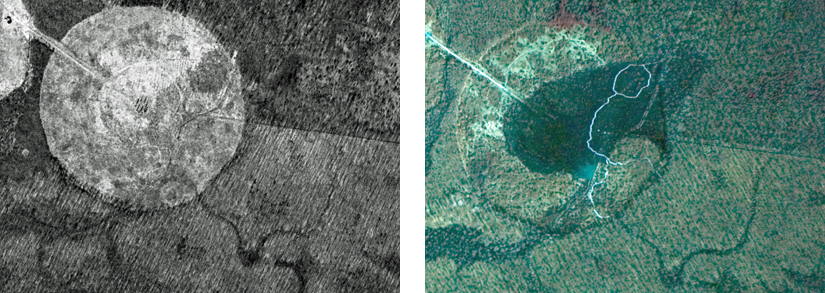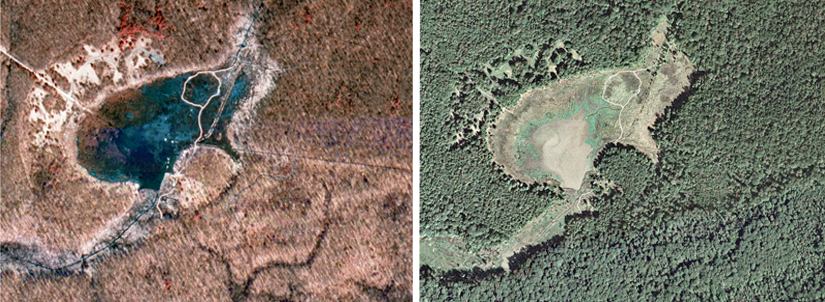How it Works
Fluctuating Water Levels
The best way to manage a hemi-marsh for long-term biodiversity is to manage the water levels. Water levels determine a wetland’s plant communities, which then create diverse habitat and attract specific communities of wildlife. Hemi-marshes need fluctuating water levels to maintain their unique plant communities -- higher water levels in late fall through early spring, lower water from mid-spring thru early fall. Droughts and floods are also important. Water levels must drop in the summer to expose mud to sunlight and oxygen, to consolidate new silt, and to allow new plants to sprout. Water levels must rise in the winter. That prevents plants from taking over and floods the surrounding wood edges to create deep, ice-free pools for aquatic life. The Huntley wetlands restoration is centered around fluctuating water levels.
Water Control System - Earthen Berm
The first part of the water control system is a low, earthen berm with a vinyl sheet piling center. The berm is just a few feet high, 600 feet long, gradually sloped and vegetated with native plants. It is straight, and therefore visible. However, it is earthen and vegetated, so it should eventually blend into the wetland relatively well. We ask that visitors not walk across it so that plants and soils can stabilize.
Water Control System – Slide Gates and Side Flow Outlet
The second part of the water control system is a concrete box with plastic pipes and metal slide gates that allow park staff to manipulate the wetland’s water levels. The box and pipes are underwater (and under a new observation platform) so they are hidden from view during all but severe droughts. A natural surface side flow outlet leads out of the pipes, allowing the structure to vent water back into Barnyard Run behind and below the earthen berm.
Habitat Pools
Five habitat pools about three feet below grade provide deeper water habitat. These provide aquatic refuge during summer droughts and winter freezes. They also provide diving habitat for wildlife such as Pied-billed Grebes, Hooded Mergansers and otters as well as fish and crayfish.
Brush Shelters and Loafing Logs
Numerous wildlife brush shelters and large loafing/sunning logs in the wetland provide large, coarse, woody debris habitat for birds, reptiles, amphibians, crayfish, dragonflies, fish and aquatic mammals.
Expanded Wetland Footprint
Park staff seasonally expands the central pool of the wetland to twice its size from 23.2 acres to 46.2 acres. The system also makes it possible to seasonally expand the wetland footprint into the surrounding woodland, creating valuable flooded forest habitat.
More in Our Stories and Perspectives Blog:



